
Types and elements of websites
When it comes to digital marketing, an organization’s website is a powerful tool as an owned media under the total control of the organization. As there are broadly two types of organizations, commercial organizations and noncommercial organizations, we can identify two types of websites, commercial and non-commercial. Each type of website has its own aims. Commercial websites are business-oriented so their aims include acquiring new customers, converting potential customers, and retaining existing customers. Meanwhile, non-commercial websites (e.g., US government website) aim to change behaviors, encourage participation, and provide useful information.
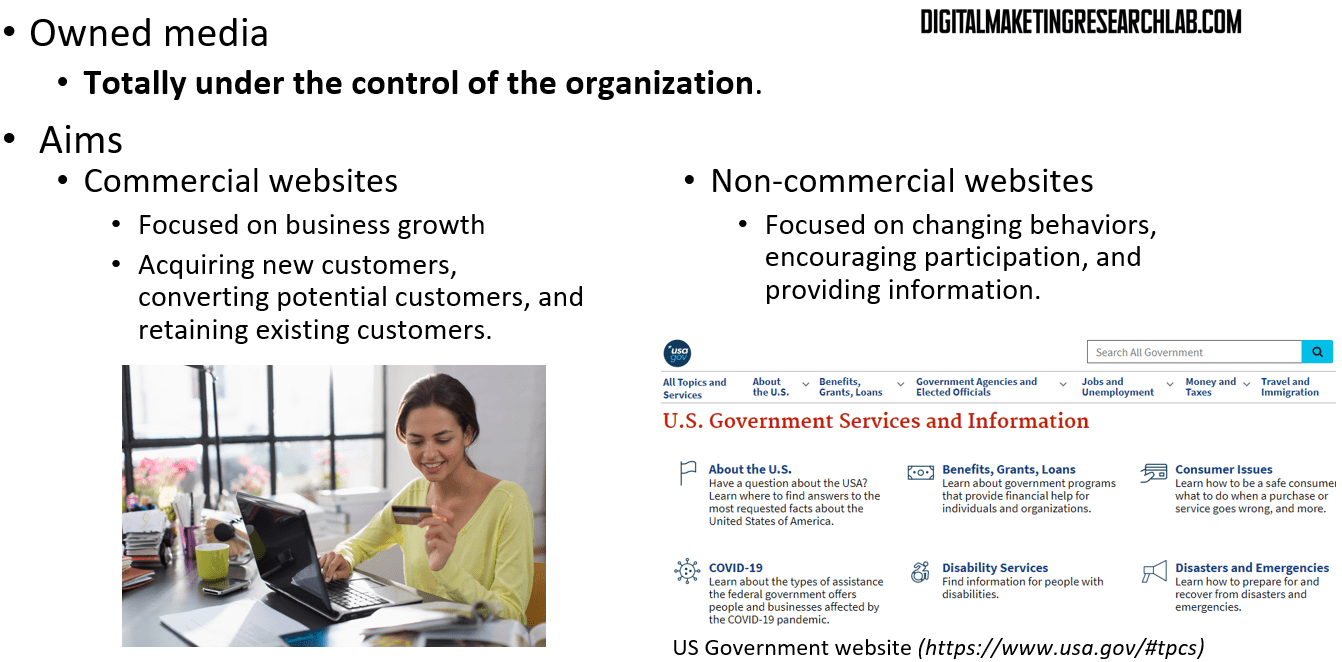
Types of website
When we narrow down the category of websites into commercial ones, there are mainly three types of commercial websites: eCommerce sites, lead generation sites, and portfolio sites. eCommerce websites are designed to sell their products directly to website visitors online. However, lead generation sites do not sell products directly but collect contact details from visitors by encouraging visitors to enter their contact details into a web form on the website. The leads (or prospective customers) will eventually turn into real customers through the efforts of companies. Meanwhile, portfolio websites demonstrate products and services online, and visitors can learn about a company and its offerings by reading through the content.
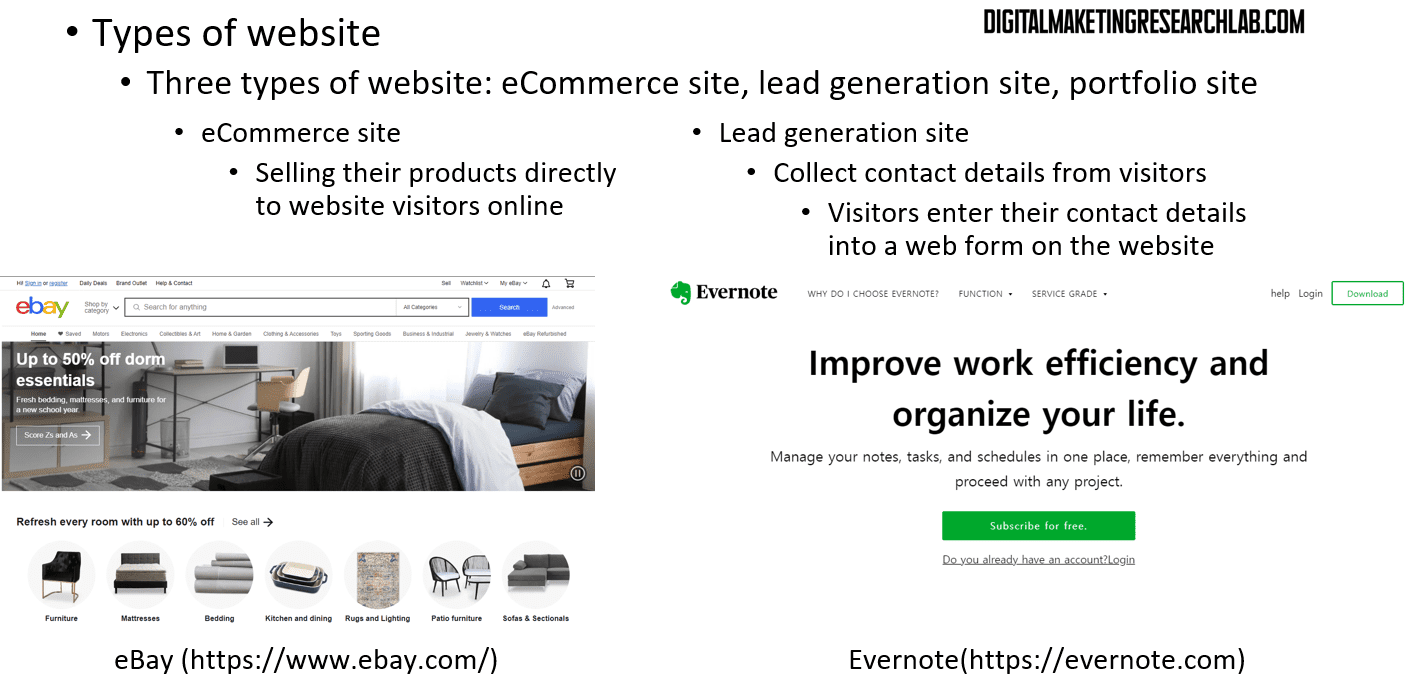
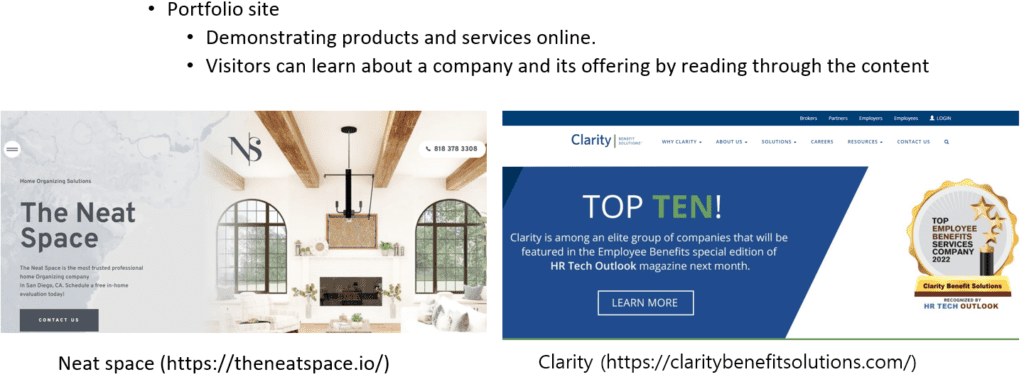
All of these websites have common goals, such as increasing total and returning users, boosting users’ average time on site, and building positive brand affinity.
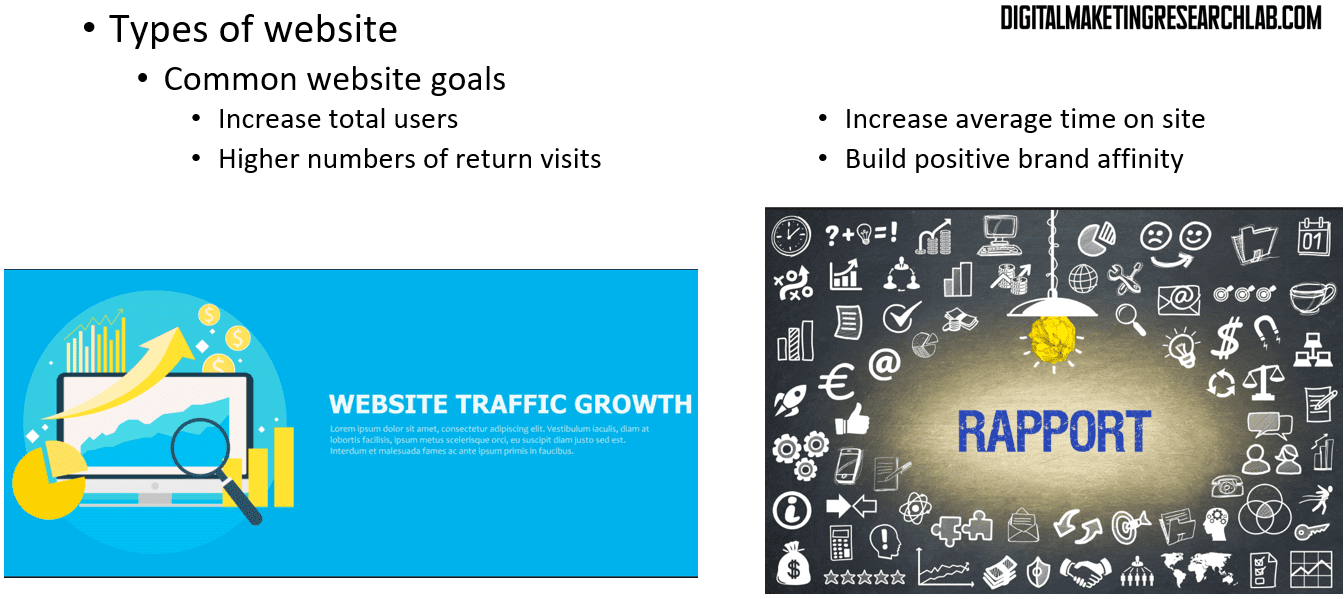
Beyond those goals, websites aim to improve user experience (UX) and enhance customer experience (CX). UX refers to improving a website user’s reaction to using a website. In other words, users have better experiences when they find information on a website quickly and easily, complete the desired task with ease, and search web pages with ease. Meanwhile, CX refers to improving a customer’s reaction to a brand. Regarding the relationship between the two concepts, UX is part of a broader CX, but CX contains some aspects outside of a product that UX does not.
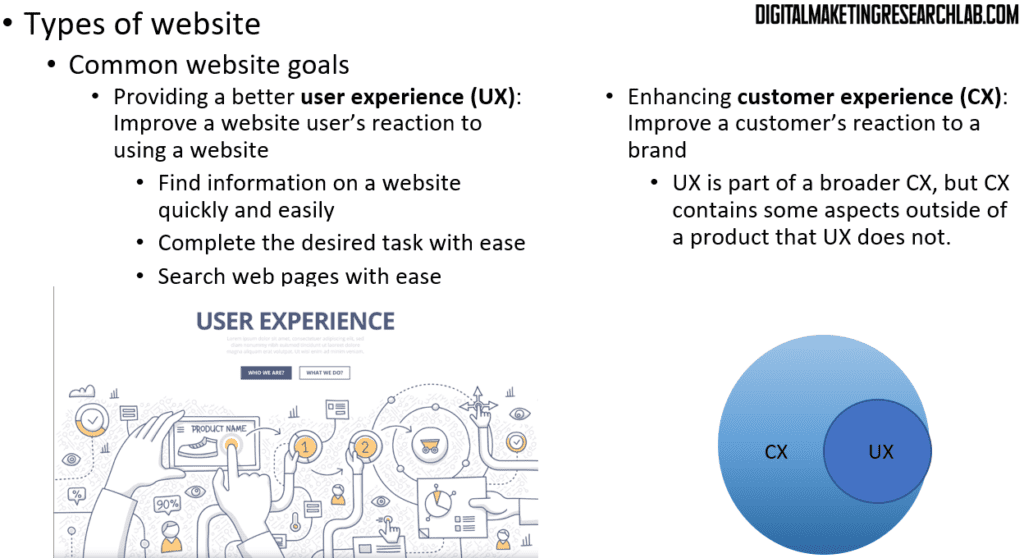
To provide better user experience (UX) and customer experience (CX), a website should be free from friction. Friction is anything that makes it hard for a website visitor to complete an action such as browsing the web. Some potential friction points include confusing navigation, slow checkout process, unclear benefits of converting, and slow website.
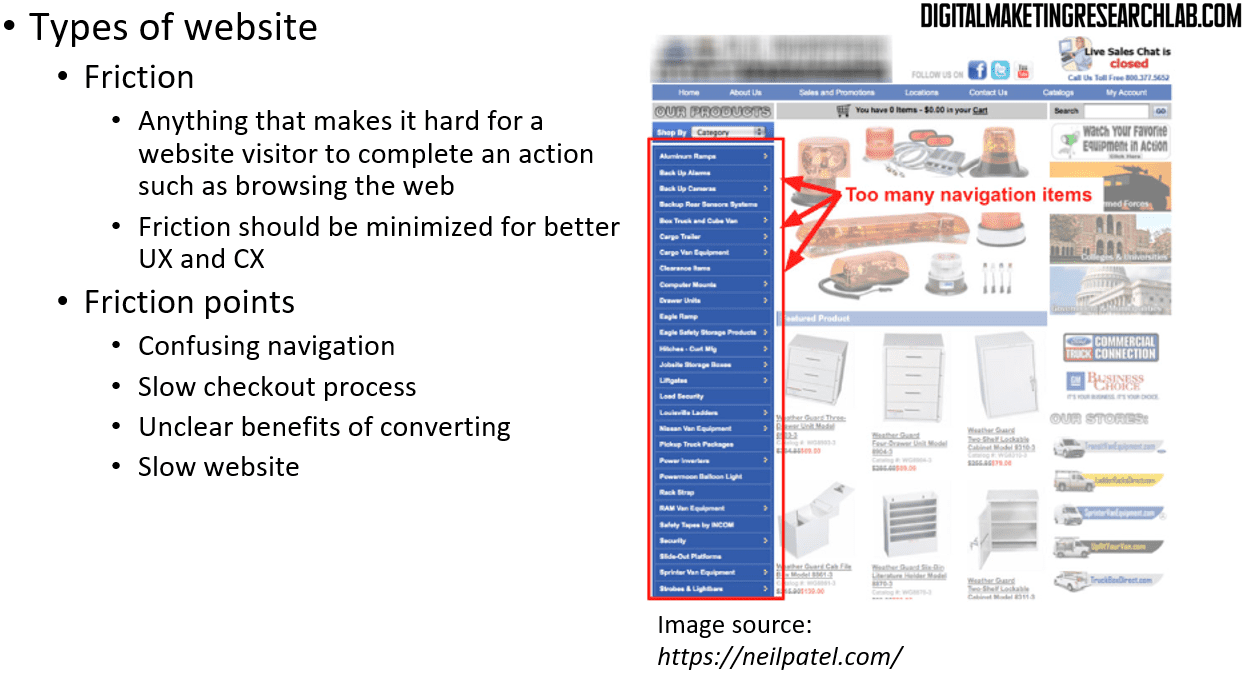
Meanwhile, eCommerce and lead generation websites have distinguishable goals, too. First, eCommerce sites aim to increase transactions and revenue and improve eCommerce conversion rate, which is the % of people who visit the site and then buy ( = sales / total visitors). Also, their another goal is to increase average order value (AOV), which is the average amount someone spends when they buy ( = revenue/sales) .
On the other hand, lead generation sites aim to increase the number of qualified leads (i.e., the total number of good leads) and drive a higher lead conversion rate (i.e., the % of website visitors who fill out a web form). They also strive to improve lead close rate, which is the % of qualified leads that the sales team successfully sells.
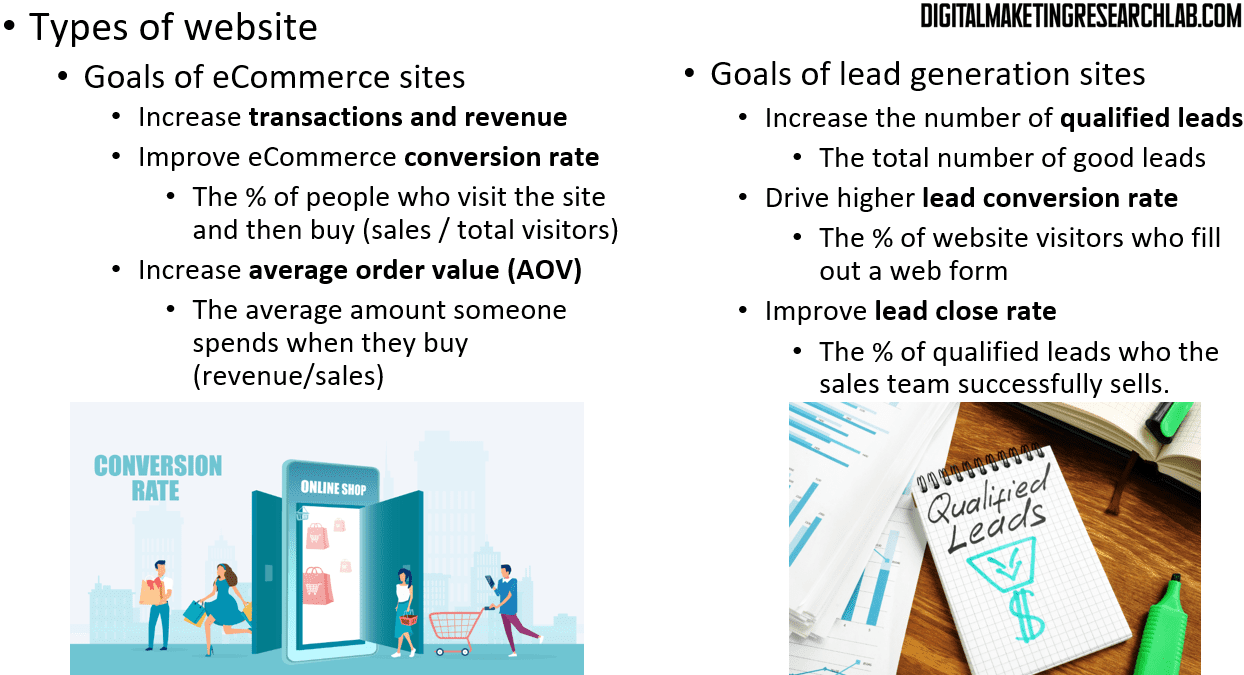
Role of marketers in web design
Although web designing is usually undertaken by web designers or developers, marketers should cooperate with them. Marketers should also work on branding, writing and editing content, and optimizing a website with search engine optimization (SEO). The role of marketers in web design expands to the preparation of web data tracking and data analysis. Well-known web analytics tools include Google Analytics and Adobe Analytics.

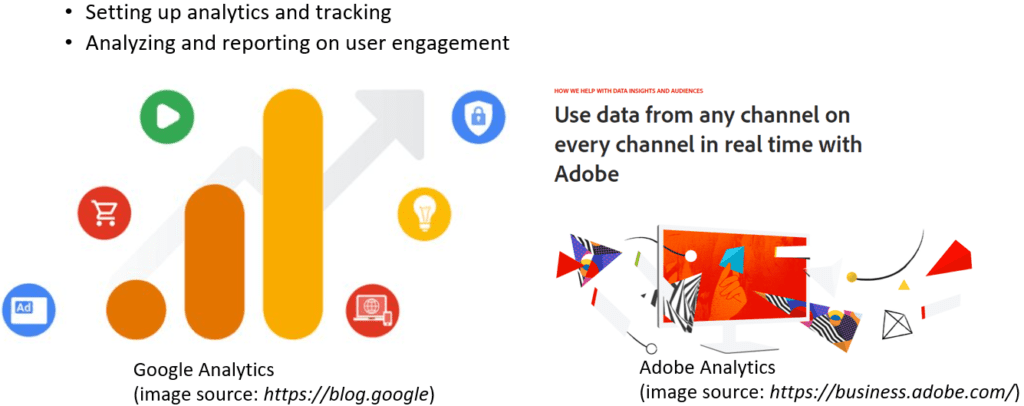
Key elements of a website
Webpages have elements such as navigation, page title, body copy, image, page headers, hero image, web forms, call-to-action (CAT), and so on.
Usually, at the top of a webpage, you can find a navigation bar that is a menu of page names. Then, you can find a page title that is the name of the webpage. A page title is one of the crucial elements for search engine optimization (SEO) that enables search engines to rank the webpage at a higher place on the search engine result page (SERP). The inclusion of keywords in a page title is recommendable practice for SEO. Body copy is the words written on a webpage as content. Images are graphical elements that make a webpage more engaging and appealing to visitors. Page headers are headings that indicate shifts to different sections. As with a page title, page headers need to include keywords for SEO purposes.
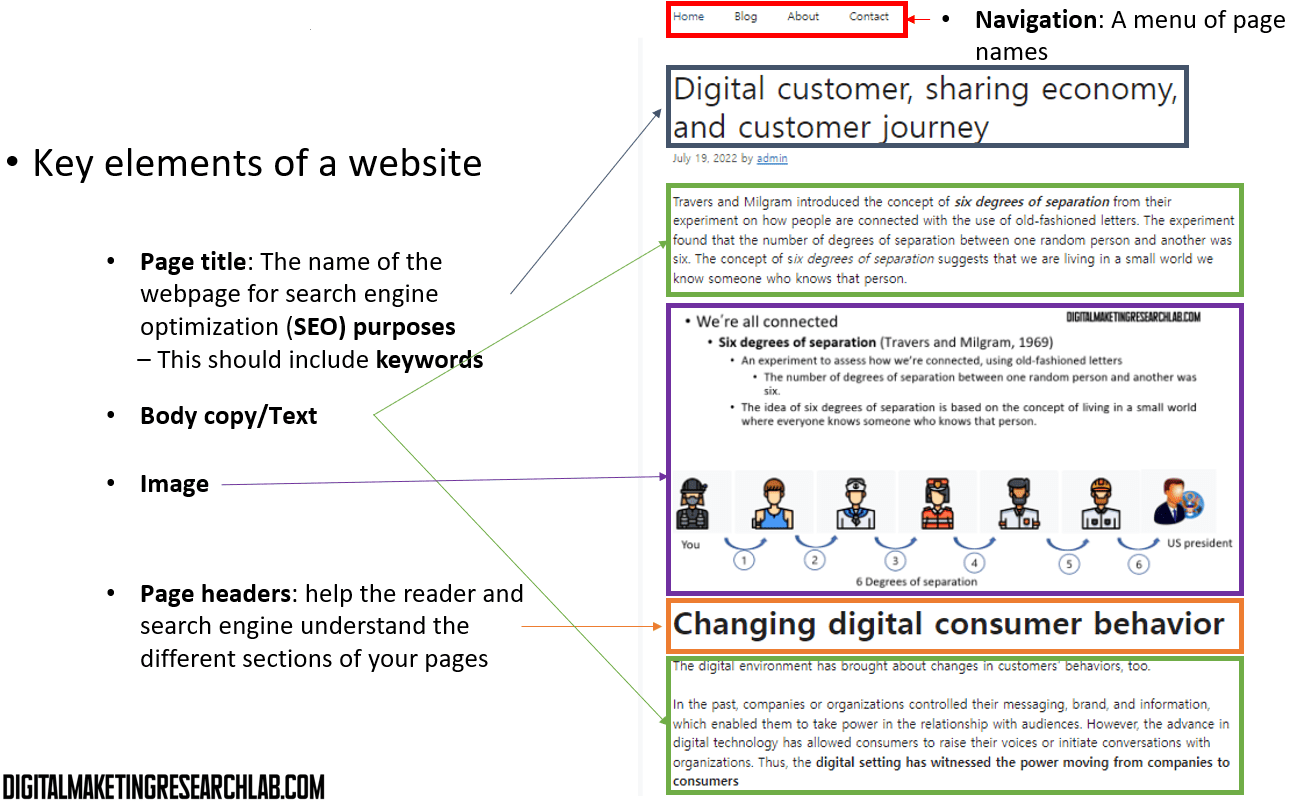
A hero image is the first large visual element that visitors encounter on the website and presents an overview of the website. It is also accompanied by a call-to-action (CTA). Web form is a place where website visitors can enter their name and contact details in exchange with something valuable to the visitors, such as e-books. Call-to-Action (CAT) is a button to help guide the visitor to take action on a website
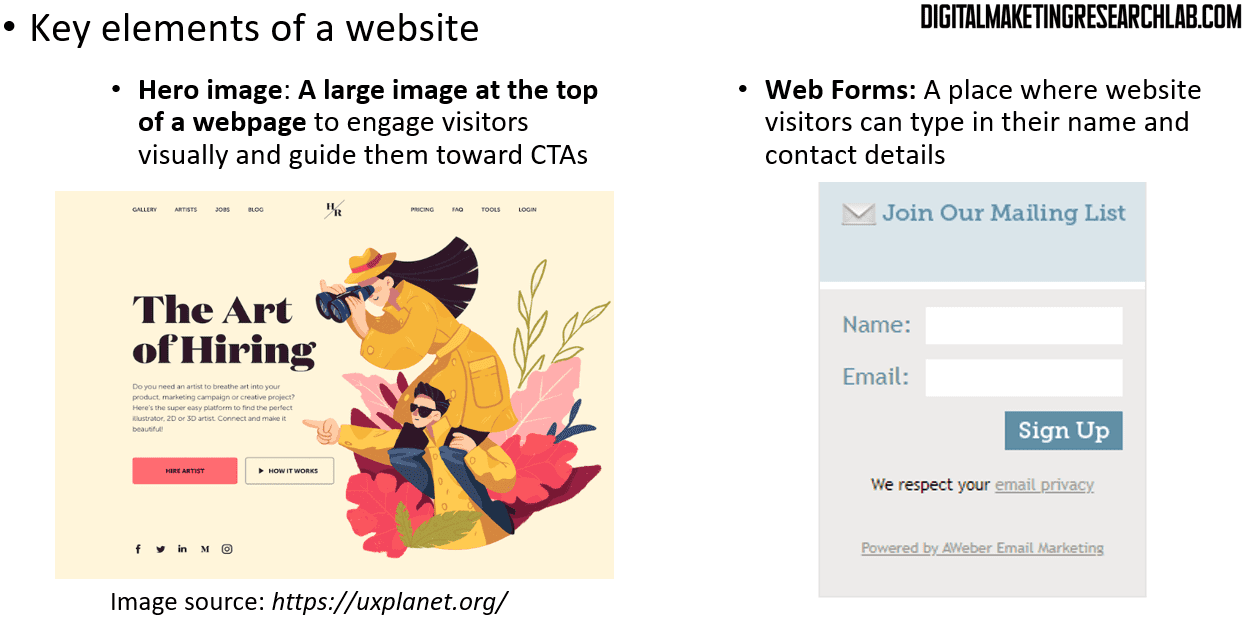
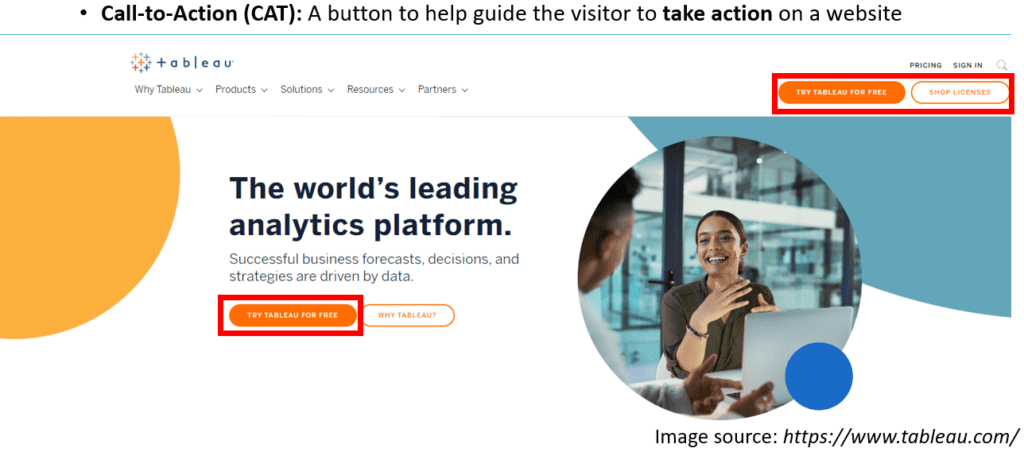
*Reference
Hanlon, A. (2021). Digital marketing: strategic planning & integration. Sage.
Digital Marketing Institute (2021). Introduction to Digital Marketing.